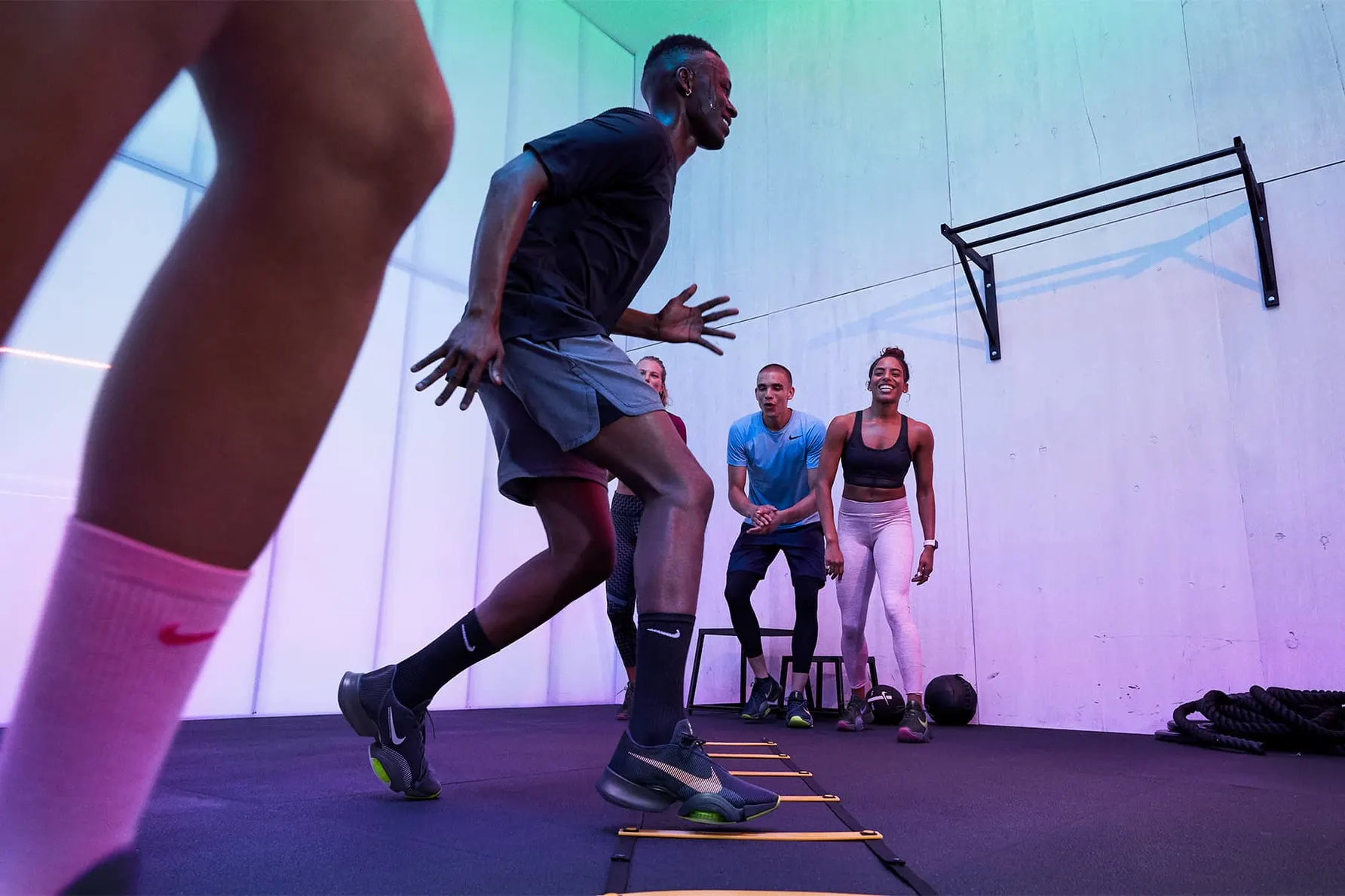In the competitive landscape of athletics, achieving peak performance requires more than just physical training; it necessitates a comprehensive approach that includes biohacking, nutrition, technology, and mental conditioning. This article explores effective strategies for athletes to enhance their performance and recovery through innovative techniques backed by scientific research. By understanding how to leverage these methods, athletes can optimize their training regimens, improve their recovery times, and boost their mental resilience, ultimately leading to better outcomes in their sporting endeavors.
In this article you will find:
Understanding Biohacking and Its Impact on Athletic Performance
In recent years, biohacking has emerged as a revolutionary approach for athletes looking to enhance their performance and optimize their training regimens. This practice encompasses a wide array of techniques aimed at improving physical and mental capabilities by leveraging scientific research and innovative methods. Understanding the core principles of biohacking can empower athletes to achieve their peak potential.
What is Biohacking?
Biohacking refers to the practice of using science, technology, and self-experimentation to enhance the body’s performance and overall well-being. It can range from simple lifestyle changes to advanced techniques involving technology and supplements. The primary goal of biohacking is to take control of one’s biology and improve health outcomes, which is particularly relevant for athletes striving for excellence.
The Science Behind Biohacking
At its core, biohacking is grounded in scientific research and evidence-based practices. This includes understanding how various factors—such as nutrition, sleep, and exercise—affect athletic performance. Here are some key scientific aspects:
- Genetic Modifications: Some biohackers explore genetic testing to identify predispositions to certain athletic traits, allowing for tailored training programs.
- Nutrition Optimization: Athletes are increasingly aware of the importance of diet, utilizing specific macronutrient ratios and timing their meals to fuel performance.
- Neuroenhancement: Techniques like neurofeedback and meditation are used to enhance mental focus and reduce stress, which can significantly impact performance.
Impact on Athletic Performance
The integration of biohacking techniques can lead to remarkable improvements in athletic performance. Here’s how:
- Enhanced Recovery: Biohacking methods, such as cold therapy and infrared saunas, help reduce muscle soreness and expedite recovery times, allowing athletes to train harder and more frequently.
- Increased Endurance: Utilizing supplements like beetroot juice has been shown to improve oxygen delivery to muscles, enhancing endurance during prolonged activities.
- Improved Mental Clarity: Techniques like mindfulness and cognitive training can sharpen focus and decision-making skills, which are crucial during competitive events.
Current Trends in Biohacking for Athletes
As the field of biohacking evolves, several trends are gaining traction among athletes:
- Wearable Technology: Devices that track biometrics such as heart rate variability, sleep quality, and activity levels are becoming essential tools for athletes aiming to optimize their training.
- Personalized Nutrition: The rise of DNA-based diet plans allows athletes to tailor their nutrition according to their unique genetic makeup.
- Mind-Body Integration: Increasingly, athletes are recognizing the importance of mental training and stress management as vital components of their performance strategy.
Understanding biohacking and its impact on athletic performance provides a strong foundation for athletes looking to maximize their capabilities. With the right approach and techniques, athletes can unlock their full potential and stay ahead in their competitive endeavors.
Harnessing Nutrition and Supplements for Optimal Recovery
For athletes, the journey towards peak performance does not end with the last rep or the final lap; it extends into the recovery phase. Proper nutrition and the strategic use of supplements play a critical role in ensuring that athletes recover effectively and are prepared for their next training session. Understanding how to harness these elements can significantly impact overall performance.
The Importance of Nutrition in Recovery
Nutrition is the foundation of recovery. After intense physical activity, the body requires specific nutrients to repair muscle tissue, replenish glycogen stores, and reduce inflammation. Key components of a recovery-focused diet include:
- Proteins: Essential for muscle repair and growth, athletes should aim to consume high-quality protein sources such as lean meats, fish, eggs, and plant-based options like lentils and quinoa.
- Carbohydrates: After a workout, replenishing glycogen stores is vital. Consuming complex carbohydrates such as whole grains, fruits, and vegetables helps restore energy levels.
- Fats: Healthy fats, including avocados, nuts, and olive oil, provide essential fatty acids that support cellular repair and overall health.
Timing and Composition of Meals
The timing of nutrient intake can greatly influence recovery. Consuming a balanced meal or snack within 30 to 60 minutes post-exercise can maximize recovery benefits. This meal should ideally consist of a mix of carbohydrates and protein. For example, a smoothie made with banana, spinach, protein powder, and almond milk serves as an excellent post-workout recovery option.
Supplements to Enhance Recovery
In addition to whole foods, certain supplements can further support recovery. Here are some popular options:
- Branched-Chain Amino Acids (BCAAs): These essential nutrients can reduce muscle soreness and improve recovery time. BCAAs are often taken before or after workouts to enhance muscle repair.
- Omega-3 Fatty Acids: Found in fish oil, omega-3s have anti-inflammatory properties that can help reduce post-exercise soreness and improve overall joint health.
- Electrolytes: Maintaining proper hydration is crucial, especially after intense workouts. Supplementing with electrolytes can help restore balance and prevent cramping.
- Curcumin: Derived from turmeric, curcumin is known for its anti-inflammatory properties and can aid in muscle recovery and pain relief.
Hydration: A Key Component
Hydration is often overlooked but is a critical aspect of recovery. During exercise, athletes lose fluids and electrolytes, which must be replenished to maintain optimal performance and prevent fatigue. Water is essential, but for longer workouts, consider incorporating electrolyte-rich beverages to restore lost minerals.
Research suggests that even mild dehydration can impair performance, so it’s essential for athletes to monitor their hydration status before, during, and after exercise. For more detailed insights on hydration strategies, check out this comprehensive study on hydration in athletes.
Conclusion
By harnessing the power of nutrition and supplements, athletes can optimize their recovery, ensuring they are ready to tackle their next training session with vigor. Understanding the science behind recovery nutrition and strategically incorporating supplements can lead to improved performance and overall well-being.
Utilizing Technology for Performance Tracking and Enhancement
In the age of technology, athletes have access to an unprecedented array of tools that can significantly enhance their training and performance. Utilizing technology for performance tracking and enhancement not only aids in monitoring progress but also allows for data-driven adjustments to training regimens. Here, we explore the various technological advancements that can help athletes achieve their goals more effectively.
Wearable Technology: Your Personal Trainer
Wearable devices have revolutionized the way athletes track their performance. These gadgets offer real-time data on various metrics, enabling athletes to make informed decisions about their training. Some key benefits include:
- Heart Rate Monitoring: Devices like smartwatches and fitness trackers provide continuous heart rate data, allowing athletes to optimize their training intensity and recovery times.
- GPS Tracking: For runners and cyclists, GPS technology can track distance, pace, and route, providing insights into performance trends over time.
- Sleep Tracking: Quality sleep is crucial for recovery. Wearables that monitor sleep patterns help athletes understand their rest quality and make necessary adjustments.
Performance Analysis Software
In addition to wearable technology, software applications offer athletes the ability to analyze their performance data in-depth. These tools can provide insights that are often missed through simple observation:
- Video Analysis: Using apps or software for video analysis allows athletes and coaches to break down movements frame by frame, identifying areas for improvement.
- Data Visualization: Performance tracking software can visualize data trends over time, helping athletes recognize patterns in their training and performance.
- Custom Training Plans: Some software platforms use artificial intelligence to create personalized training plans based on an athlete’s performance history and goals.
Smart Equipment: Training with Precision
The advent of smart fitness equipment has made it easier for athletes to train more effectively. These devices often include built-in sensors that provide instant feedback:
- Smart Weights: Devices like smart dumbbells can track the amount of weight lifted and repetitions performed, offering insights into strength gains and suggesting adjustments.
- Connected Exercise Machines: Treadmills, bikes, and rowing machines equipped with connectivity features can sync with apps to provide comprehensive workout data.
- Biomechanical Sensors: Wearable sensors can assess an athlete’s biomechanics, helping to prevent injuries and enhance performance by ensuring proper technique.
Mobile Applications for Training and Recovery
Smartphone applications have become essential tools for athletes, offering a variety of functions to support training and recovery:
- Workout Planning: Apps can help athletes create and track workouts, set goals, and monitor progress, making it easier to stay organized.
- Nutrition Tracking: Many apps allow users to log their meals and monitor nutrient intake, which is essential for optimizing recovery and performance.
- Mental Training Tools: Apps focused on mental conditioning provide guided meditations, visualization techniques, and stress management strategies.
Integrating Technology into Training Regimens
To maximize the benefits of technology, athletes should consider integrating various tools into their training routines. Here are some tips:
- Set Clear Goals: Define specific performance goals and use technology to track progress towards these objectives.
- Regularly Review Data: Schedule time to analyze performance data and adjust training plans based on findings.
- Consult Professionals: Work with coaches or sports scientists who can interpret data and provide expert advice on training adjustments.
Incorporating technology into performance tracking and enhancement not only streamlines the training process but also empowers athletes to take charge of their development. By leveraging these innovative tools, athletes can gain a competitive edge and make informed decisions that lead to sustained improvement.
Mental Conditioning Techniques to Boost Athletic Focus and Resilience
In the competitive world of athletics, physical prowess is just one piece of the puzzle. Mental conditioning is equally crucial, as it influences focus, motivation, and resilience during training and competitions. Athletes who invest in their mental skills often find themselves performing at higher levels, regardless of physical condition. Here, we explore effective mental conditioning techniques that can enhance athletic focus and resilience.
The Power of Visualization
Visualization is a powerful mental conditioning technique that involves creating a detailed mental image of success. Athletes can use visualization to prepare for competitions, rehearse techniques, and boost confidence. Here’s how to effectively implement visualization:
- Set a Clear Intention: Before visualizing, define what you want to achieve, whether it’s executing a perfect jump or winning a race.
- Create Vivid Images: Engage all senses to make the mental images as realistic as possible. Imagine the sights, sounds, and feelings associated with success.
- Practice Regularly: Incorporate visualization into your daily routine, especially before training sessions and competitions.
Mindfulness and Meditation
Mindfulness and meditation are increasingly recognized for their benefits in sports psychology. These practices help athletes stay present and focused, reducing anxiety and enhancing performance. Here’s how to incorporate them:
- Breathing Exercises: Simple breathing techniques can help calm the mind. Spend a few minutes each day focusing on your breath to improve concentration.
- Guided Meditations: Use apps or online resources to find guided meditations specifically tailored for athletes. These can help enhance focus and reduce stress.
- Body Scans: A body scan meditation involves focusing on different body parts, promoting relaxation and body awareness, which can be beneficial during intense training.
Goal Setting for Enhanced Focus
Setting clear, achievable goals is vital for maintaining focus and motivation. By breaking down larger objectives into smaller, manageable tasks, athletes can create a roadmap to success. Consider these strategies for effective goal setting:
- SMART Goals: Ensure your goals are Specific, Measurable, Achievable, Relevant, and Time-bound. This structure provides clarity and direction.
- Visual Reminders: Use visual cues, such as notes or vision boards, to keep your goals front and center in your daily routine.
- Celebrate Small Wins: Recognize and celebrate your progress along the way to maintain motivation and commitment.
Positive Self-Talk
The language athletes use with themselves can significantly affect their mindset and performance. Positive self-talk can enhance confidence and reduce performance anxiety. To cultivate effective self-talk:
- Identify Negative Thoughts: Pay attention to any self-doubt or negative commentary during training or competition.
- Replace with Positive Affirmations: Create a list of positive affirmations that resonate with you. Repeat these to yourself regularly to reinforce a positive mindset.
- Practice Gratitude: Acknowledge your achievements and the effort you put into your training. This can shift focus away from negative thoughts.
Building Resilience Through Challenges
Resilience is the ability to bounce back from setbacks and maintain focus under pressure. To build resilience, athletes can:
- Embrace Failure: View setbacks as learning opportunities rather than defeats. Analyzing what went wrong can lead to growth and improvement.
- Seek Support: Surround yourself with a supportive network of coaches, teammates, and friends who can provide encouragement and perspective.
- Stay Adaptable: Learn to adjust your strategies and expectations in response to changing circumstances, whether in training or competition.
By integrating these mental conditioning techniques into their training, athletes can enhance their focus and resilience, ultimately leading to improved performance. The mind plays a crucial role in sports, and investing time and effort into mental conditioning can yield significant benefits in any athletic endeavor. Incorporating biohacking techniques, proper nutrition, and advanced technology is essential for athletes seeking to enhance their performance and recovery. Biohacking utilizes scientific research to optimize physical and mental capabilities, focusing on factors like nutrition, sleep, and neuroenhancement. Key strategies include leveraging wearable technology for real-time data tracking, optimizing meal timing, and utilizing supplements such as BCAAs and omega-3 fatty acids to support recovery.
Mental conditioning is equally vital, as it boosts focus and resilience through techniques like visualization, mindfulness, and positive self-talk. Athletes should set clear, achievable goals and embrace challenges as opportunities for growth. By integrating these practices, athletes can significantly improve their training outcomes, ensuring they remain competitive and prepared for their next performance.




